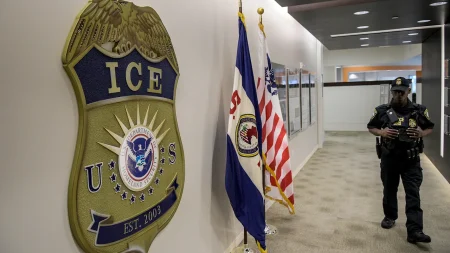Gaza Ceasefire Negotiations: Hamas Responds Positively But Key Hurdles Remain
In a carefully worded statement released yesterday, Hamas has signaled openness toward a ceasefire proposal aimed at ending the devastating conflict in Gaza that has raged for over seven months. The development marks a potential breakthrough in diplomatic efforts that have repeatedly stalled since hostilities erupted last October. While the statement has generated cautious optimism among mediators and observers, significant gaps remain between the parties’ positions on several critical elements of the proposed agreement. International stakeholders now find themselves navigating a delicate path forward, balancing renewed hope against the complex realities that have thus far prevented a lasting resolution.
Hamas Extends Conditional Approval While Sidestepping Contentious Issues
The Hamas leadership’s response, which came after weeks of intense behind-the-scenes negotiations facilitated by Qatar, Egypt, and the United States, struck a notably positive tone compared to previous communications. Senior Hamas official Khalil al-Hayya characterized the group’s position as “positive and constructive,” emphasizing their commitment to alleviating the humanitarian catastrophe unfolding across Gaza. The statement explicitly welcomed provisions relating to prisoner exchanges and increased humanitarian aid deliveries to the besieged territory, where over two million Palestinians have faced acute shortages of food, medicine, and essential services.
However, diplomatic sources familiar with the negotiations point out that the statement conspicuously avoided addressing several fundamental aspects of the proposed agreement that Hamas has previously rejected. “What’s notable isn’t just what the statement says, but what it deliberately omits,” explained Dr. Sarah Mahmoud, a Middle East policy analyst at the International Crisis Group. “Hamas has effectively acknowledged the parts of the deal they find acceptable while remaining silent on provisions they’ve consistently deemed problematic.” These unaddressed elements include requirements for Hamas to relinquish control of key border crossings, the complete disarmament of militant factions, and Israeli security forces maintaining operational presence in strategic corridors within Gaza. Each of these points has previously been characterized by Hamas officials as “unacceptable infringements on Palestinian sovereignty” in earlier negotiating rounds.
The Three-Phase Plan: Ambitious Roadmap Faces Implementation Challenges
The ceasefire proposal, developed through months of painstaking diplomatic efforts, envisions a three-phase implementation process designed to gradually de-escalate the conflict while addressing both parties’ core demands. The first phase would establish an initial six-week ceasefire accompanied by the release of certain categories of hostages held in Gaza in exchange for Palestinian prisoners in Israeli detention. This would coincide with increased humanitarian aid deliveries and limited civilian returns to northern Gaza under strict security protocols. The second phase would extend the ceasefire while facilitating additional prisoner exchanges and beginning reconstruction efforts in specified zones. The third and most ambitious phase aims to establish a sustainable long-term truce while resolving the status of remaining captives and implementing governance arrangements for post-conflict Gaza.
“The phased approach represents a creative attempt to bridge seemingly incompatible positions,” noted Ambassador James Richardson, former U.S. envoy to Middle East peace negotiations. “By sequencing actions and commitments, mediators hope to build momentum and trust incrementally rather than demanding comprehensive agreement upfront.” Nevertheless, skepticism persists regarding implementation feasibility, particularly concerning verification mechanisms and enforcement provisions should either side violate terms. Israeli officials have insisted on robust security guarantees before withdrawing forces from strategic positions, while Hamas has demanded comprehensive Israeli withdrawal as a precondition for releasing all hostages. This fundamental sequencing disagreement remains unresolved despite the positive rhetoric surrounding Hamas’s latest statement.
Humanitarian Crisis Intensifies as Diplomatic Clock Ticks
Against the backdrop of diplomatic maneuvering, Gaza’s humanitarian situation continues to deteriorate at an alarming pace, creating urgency that both complicates and necessitates the negotiation process. The United Nations Office for the Coordination of Humanitarian Affairs (OCHA) reported this week that approximately 85% of Gaza’s population remains internally displaced, with critical infrastructure systems—including water treatment facilities, hospitals, and electrical grids—operating at minimal capacity or completely inoperative. Aid organizations have documented alarming increases in malnutrition rates, particularly among children under five, while disease outbreaks threaten crowded shelter facilities where thousands seek refuge from ongoing military operations.
Dr. Helena Kobeissi, emergency response coordinator with Médecins Sans Frontières, described conditions in central Gaza as “catastrophic and deteriorating daily” during a press briefing held virtually from Cairo. “The medical system has effectively collapsed. We’re performing complex surgeries without anesthesia, treating infected wounds without antibiotics, and watching patients die from entirely preventable causes,” she explained. “Each day without a ceasefire translates directly into lives lost—not just from military operations but from the complete breakdown of basic services.” This humanitarian imperative has intensified pressure on negotiators, with UN Secretary-General António Guterres calling the situation “a stain on our collective conscience” and urging parties to set aside maximalist positions in favor of immediate civilian protection measures. The dire conditions have strengthened arguments from mediators that even an imperfect agreement implemented swiftly would save countless lives compared to continued hostilities while diplomats pursue perfect terms.
Regional Implications and International Stakeholders’ Calculations
The conflict’s regional ramifications have expanded significantly in recent weeks, with escalating tensions along Israel’s northern border with Lebanon and increased Houthi attacks on maritime shipping in the Red Sea. These developments have transformed what began as a localized Israel-Hamas confrontation into a potential regional conflagration, elevating stakes for international stakeholders. The United States has deployed additional naval assets to the eastern Mediterranean while intensifying diplomatic engagement across the region, reflecting growing concern about further escalation. Meanwhile, Iran’s posture remains closely watched, with intelligence agencies monitoring for signs that Tehran might encourage proxy forces to expand operations should Gaza negotiations collapse.
“What happens in Gaza no longer stays in Gaza,” remarked Professor Ibrahim Al-Rashidi, director of security studies at the University of Jordan. “We’re witnessing the conflict’s gravitational pull drawing in additional actors and theaters, creating a dangerous complexity that makes de-escalation increasingly difficult.” European diplomats have similarly expressed alarm, with one senior EU official speaking on condition of anonymity describing the situation as “a powder keg with multiple fuses burning simultaneously.” This regional context has created additional incentives for mediators to secure even a partial agreement, with hopes that reduced tensions in Gaza might defuse parallel conflicts before they reach critical thresholds. Saudi Arabia has reportedly increased back-channel communications with both Israeli and Iranian counterparts, positioning itself as a potential stabilizing influence should negotiations progress toward implementation phases.
Pathway Forward: Cautious Hope Amid Fundamental Disagreements
As diplomatic efforts enter what mediators characterize as a decisive phase, attention focuses on whether the positive language in Hamas’s statement represents genuine negotiating flexibility or merely tactical positioning. Qatar’s Prime Minister Sheikh Mohammed bin Abdulrahman Al Thani, who has played a central role in facilitating talks, urged “all parties to seize this critical moment” while acknowledging that “substantial work remains to translate positive statements into implementable agreements.” Egyptian intelligence officials, who maintain direct communication channels with both Israeli and Hamas leadership, have reportedly intensified shuttle diplomacy between Cairo, Tel Aviv, and Doha in an attempt to narrow remaining gaps before the current diplomatic window closes.
The path ahead remains fraught with challenges that extend beyond the immediate ceasefire terms. Questions about Gaza’s long-term governance, security arrangements, reconstruction financing, and Palestinian political reconciliation loom large over any potential agreement. Israeli Prime Minister Benjamin Netanyahu faces significant domestic political constraints, with far-right coalition partners threatening to collapse his government should he accept terms they consider insufficient for achieving stated military objectives. Similarly, Hamas leadership must navigate internal divisions between military and political wings while maintaining credibility with a Palestinian population that has endured catastrophic suffering. Despite these obstacles, the alternatives appear increasingly untenable for all involved. As veteran Middle East correspondent Robert Fisk observed before his passing, “Wars eventually end not when perfect justice is achieved, but when continuing to fight becomes more costly than compromising.” Whether the parties have reached that inflection point remains the central question as negotiators work to transform Hamas’s cautiously optimistic statement into a concrete agreement that might finally bring relief to Gaza’s beleaguered population.










